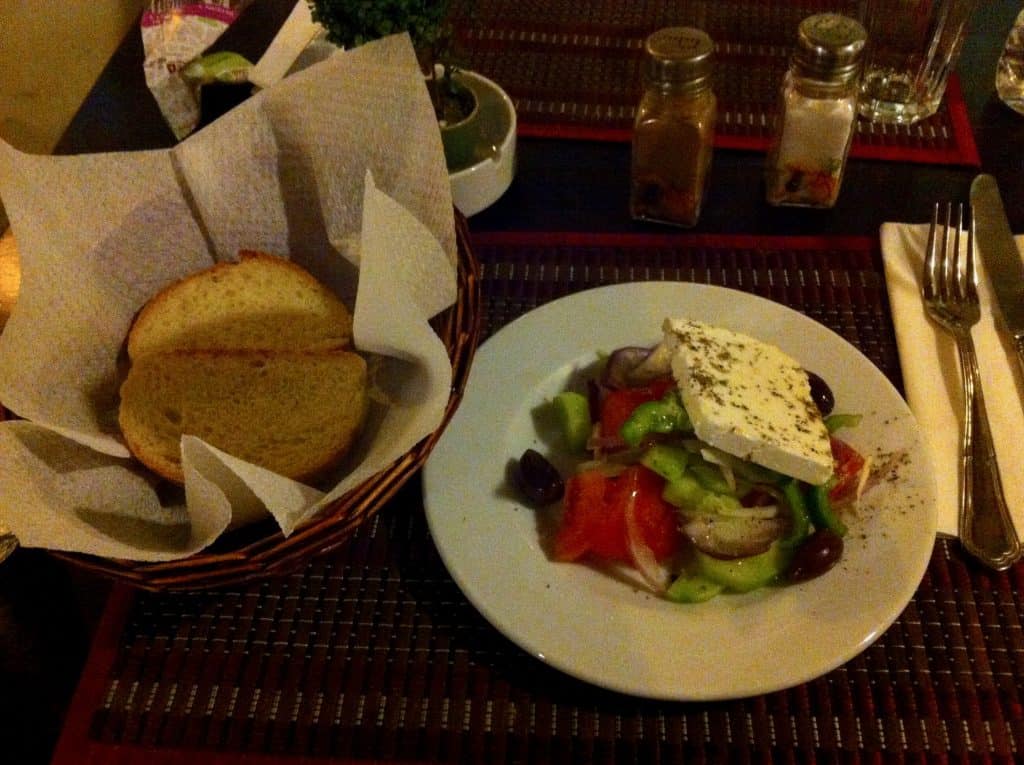A Culinary Tour of Greece
The cuisine of Greece is a culmination of ingenuity, carefully cultivated ingredients, neighboring influence, and resourcefulness. Together, this has led to a major explosion of Greek staple dishes and ingredients that are beloved and known not only within the country but all over the world today.
When I studied abroad in Greece a couple of years ago, I didn’t have much knowledge about the type of food, ingredients, and dishes most typical of the country. Our pre-departure classes focused on teaching us the country’s impressive history, civilizations, art, as well as the contributions of it’s people to the world including philosophy, democracy, mathematics, astronomy, medicinal advances that are globally relevant and in use. However, we never once touched the topic of food.


We never discussed the history of Greece through the food (even though food can also illustrate the history of a country and it’s influences, invasions, and advances) which in this case, can tell a story of the culinary creation of Greek food today, as well as it’s cultural development and similarity to those countries nearby, and the reasons why.
Being the culinary nerd in my study abroad group, I decided to make that the topic of my final presentation that was due before boarding our flights to Hellas. I’m so excited to be “visiting” this country with you all on today’s post.
Today, we will be exploring Greek food, food history, ingredients, and creativity. The journey of going from humble and simple food, to rich, fresh, and sought after cuisine and flavors worldwide.

Lay of the land
Greek cuisine was influenced based on its history, necessity, and geography. Greece is mountainous (known to be the most mountainous country in Europe), and it is the beautiful coast that touches 3 main seas; the Mediterranean Sea, the Ionian Sea, and the Aegean Sea.
The land itself is very dry, therefore impacting which crops and ingredients were prominently used before nomadic groups, invasions, and trading with other countries.
The location of the country plays a major role in the cuisine that has become recognizably Greek all over the world. According to food historians, Greek city states and societies were formed amongst the country because of its mountainous and rugged land which created natural barriers between said city-states. This in itself helped shape what is regionally traditional today, throughout different parts of Greece.


There is the mainland in which pies of all sorts of varieties (cheese/dairy, vegetables(greens), meats, sweet) are common, and closer to the coast, fresh fish of many varieties, octopus, oysters, and so much more fresh seafood are available.
Staple ingredients
Greek cuisine is easily recognizable through a list of their main ingredients, which include: fennel, garlic, feta cheese, olive oil, olives, dill, eggplant, cucumbers, yogurt, lemons, beans and so much more.
Greek poet Homer once described Greece’s olive oil as “liquid gold” and it is also said that the city of Athens received its name as a thank you to the goddess of wisdom (Athena) for gifting the city with olive groves.

As someone who never really explored Greek food prior to going to Greece, I will say that I enjoyed the food very much, as well as the flavor combinations. The freshness of the ingredients simply won me over, the simplicity and comfort of the food was so approachable and welcoming. It reminded me of Mexican food in a variety of ways, so even though I was thousands of miles away, the food reminded me of home, while I simultaneously tasted new flavors.
Influences
After the rule of the Ottoman Empire over the Greeks, the Roman invasion, the Persian influence, and then some, many different ingredients have been introduced into the Greek kitchen. Not to mention ingredients brought from South America as Eueopeans landed in territories with a wealth of resources and ingredients never used in Europe. The tomato for example is a crop that originated in South American lands that were brought to Europe, and is now a mainstay in LOTS of cultural kitchens all over the world; Greece included.
The rule of the Ottoman Empire brought a bulk of their ingredients and recipes already popular in Turkey such as baklava, coffee (their preparation of it), dolmades (grapevines stuffed with rice), and more.
This example of sharing similarities in cuisine isn’t unique to the Greek kitchen, as the bulk of the Balkan region fell under the rule of the Ottoman and Roman Empire, therefore today if you visit this region, you’ll find that many dishes are very similar in ingredients, prep, with the main difference being the name each country calls a certain dish (and the people arguing over if something is from their country or influenced/brought by the Turkish or Italians during their rule).
The Greeks are nomadic and have been throughout history, and this also influenced their cuisine, by bridging the gap between the mainland and coastal Greek regions.

As one researcher puts it, Greek mainland cuisine is “shepherd’s cuisine.” This means that the journey that shepherds would take with their flocks twice a year throughout the mainland, influenced the food of choice of this region. This is why pies are a common way of cooking, as they were easier to transport and eat on the road. Especially within the mainland, away from the sea.
As another researcher also puts it, “foraging, not farming” was mostly the norm in the earlier days of modern Greek cuisine. In this case, it was making the best out of limited and specific crops that grew for consumption in the dry terrain.
National dishes
Nowadays, when we think of Greek food, many of us think of a couple of dishes including Greek salad, gyros, baklava, souvlaki, tzatziki, moussaka, spanakopita, and more.

Ingredients such as Greek feta and honey are known to be some of the ingredients that come to mind when thinking of Greece, and with reason too. Greek feta has been recognized worldwide as a uniquely Greek product, and from that, it has earned Protected Designation of Origins (PDO) which means it is prohibited by other countries to use the name “feta” for something else. Honey itself is a national treasure as Greek honey is a lot denser, richer, and aromatic. The reason why is because as we remember, the vegetation in Greece is a bit more sparse, which creates a bit of extra effort for Greek bees to produce a certain amount of honey.
Because of the influences, land, native crops and regional cooking styles, Greek cuisine has evolved into nationally recognized dishes, while still maintaining their simplicity, approachability, and freshness. The quality and freshness of the ingredients literally shines through, further elevating the delectability of the food.
Recipe
So for today’s recipe, I wanted to share something that I have adopted in my personal life that I make today whenever I am really missing Greece. Tzatziki is a yogurt-based sauce mixed with spices and herbs such as dill, garlic, and cucumber to give this sauce a deliciously refreshing taste. It is usually served on gyros, or enjoyed by itself by dipping pita or any other kind of bread into it. This is a recipe that is simple to make and easy to follow, so I hope you enjoy it.
Tzatziki
Ingredients
1 cup of Greek yogurt
1 cup cucumber, peeled, seeded, and shredded
3 garlic cloves, minced
2 tablespoons of olive oil
1 tablespoon of lemon juice
Salt and black pepper to taste
1 teaspoon of chopped fresh dill (optional)
Directions
Shred the cucumbers using a cheese grater, place the shredded cucumber in a colander with a dish on top of it to weigh it down and let it drain for one hour. Squeeze the cucumber to remove all excess moisture.
Combine yogurt, shredded cucumber, garlic, olive oil, lemon juice, salt, and pepper and dill (if using); mix well. Refrigerate for one hour before serving.
Serve chilled, can be eaten with bread (pita bread is recommended).

Greece has such a special place in my heart (and stomach for that matter). I appreciate the freshness, quality, flavors so much. Like I said, before going to Greece, I didn’t really have much knowledge on what was Greek food. I probably heard of feta the most, and tried it once or twice (but never liked it) until I tried it in Greece. No comparison.
I hope to be back one day, to relish again in the simplicity, hospitality, and welcoming that this country offers ✨??
Have you visited Greece? What is your favorite dish from this beautiful country? Let me know in the comments below!
To more culinary adventures like these of knowledge, taste, and feel ✨

P.S. – If you’re looking for a cookbook with a broad range of international dishes and recipes, along with a bit of culinary insight – I recommend this book for you. This was the book that I used during culinary school and is one of my favorites to use to this day.
Like it? Pin it!






![10 Must-Read Travel Books You Need On Your Bookshelf [Updated 2024]](https://www.travelnotesandthings.com/wp-content/uploads/2020/05/10-Must-Read-Travel-Books-You-Need-On-Your-Bookshelf--768x1152.jpg)

